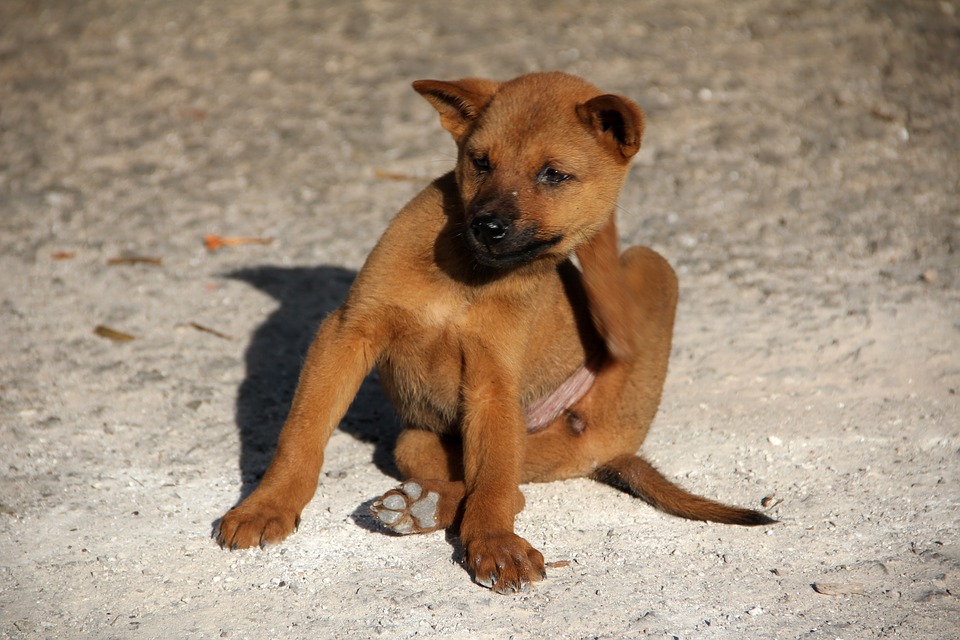
No pet owner likes dealing with fleas. Unfortunately, if you own a dog, you will almost inevitably have to deal with them at some point. When it comes to your furry friend having fleas, it’s best to treat them as quick as possible. Use a powerful treatment like Frontline Plus for dogs, which will not only kill all fleas but create a barrier which will protect your dog from further infestations for up to three months. It can be hard to tell if your dog has fleas, so if you’ve got any suspicions, here are some clues that you can look for.
Scratching, licking or biting
This is the most obvious clue that your dog might have fleas. Fleas are highly irritating to the skin, particularly in sensitive areas such as the stomach and neck. Some dogs will scratch for a range of reasons – allergic reaction to a food or product, excessive heat, a slow-healing scratch, discomfort, or a scratchy blanket. But if your dog is constantly scratching or biting at the same place, then it’s highly likely that fleas have settled.
Hair loss
There are numerous reasons why an animal may lose hair, and this includes fleas. Dogs will pull out their own hair as a result of continuous biting or scratching of the same place, and some might lose their hair as a reaction to the flea bites. You may also notice the patch of skin is very raw or covered in a rash, which is another sign of an allergic reaction. If your dog is losing clumps of hair but bearing no signs of fighting, it may be an idea to start looking at treatment.
Flea dirt
This is the little dark specs that look like tiny pieces of dirt that you might see in your dog’s fur, particularly if they’re a white-haired breed. This ‘dirt’ is actually the fecal matter of fleas, which has a black color from the blood it has consumed. You can tell it apart from normal dirt if you dab a wet towel on it and smear it in with a fingertip. If it turns a red-brown colour, this means it’s dried blood from your pet, and you need to look at treatment urgency. Look for flea dirt in places where fleas are prone to inhabit, like the neck and the base of the tail.
What should you do if your dog has any of these signs? Firstly, give your furry a friend a thorough inspection with a comb in any problem areas, and look out for fleas. When you divide the hair, fleas will run and hide, and will usually be very visible against your dog’s skin.
Another way to check for fleas is to set a flea trap in an area of your home your dog spends most of their time sleeping, like in the living room or by their bed. A bowl of warm, soapy water with a candle in it will attract nearby fleas and trap them in the slippery water. Leave a trap out overnight (be careful if you do use a candle!) and come back in the morning to check the water. If it’s full of floating black specks, then you’ve sadly got fleas in your house.